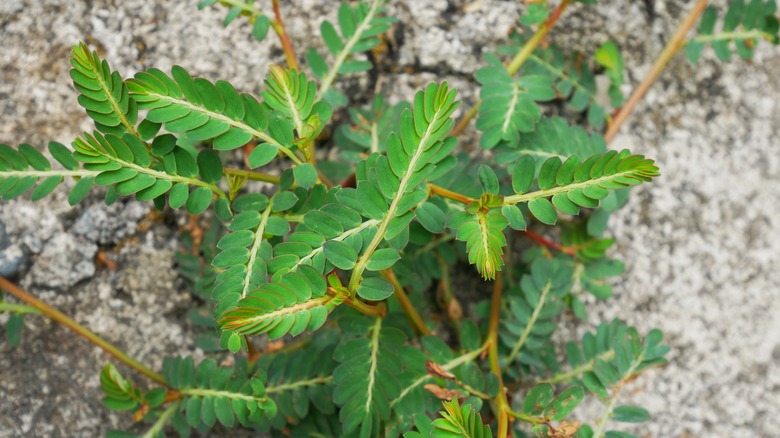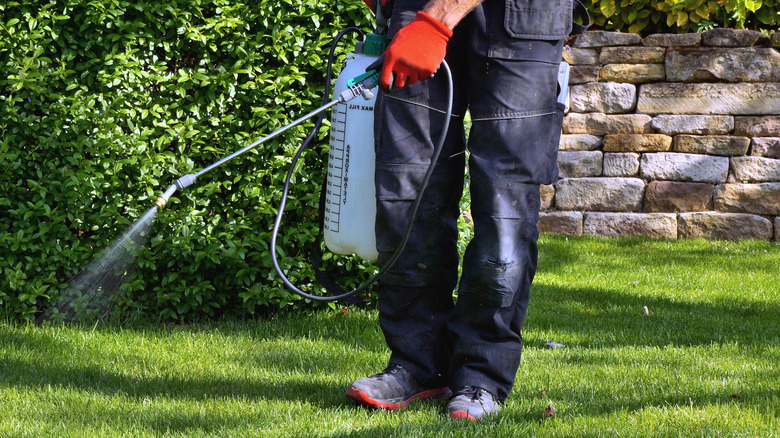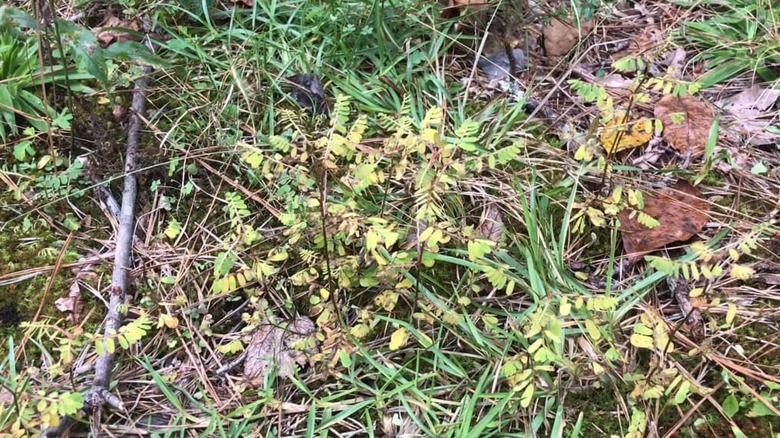Keep This Warm Season Invasive Weed Under Control With These Tips
We may receive a commission on purchases made from links.
Ah, the notorious chamberbitter gripe weed. A master of disguise hailing from the lands of Asia, this warm-season broadleaf is a real lawn crasher. It's been christened an impressive array of aliases, from gripe weed, little mimosa, and keelanelli to stone breaker, and typically makes its grand entrance in early summer. Sporting vibrant colors, this weed couldn't care less about its makeshift home. Whether gardens, roadsides, paths, or even evergreen forests, it can quite literally settle down anywhere. It's also hailed as a wellness star, boasting miraculous effects on several ailments, including fever and diabetes. But don't let that fool you; this 1- to 2-foot-tall weed is nothing short of a lawn's greatest nemesis.
This invasive weed with a penchant for exploding seeds from its multi-colored fruit just can't seem to stay out of well-watered lawns, making it doubly annoying with its commendable tolerance to mowing. So, how do you control chamberbitter weed? Despite this weed's relentless chokehold on plant life, you're not without defense. A holistic approach that might blend chemical application, hand weeding, and mulching offers a valiant offensive against this garden tyrant. Using a pre-emergent herbicide that tackles the lawn weed seeds before germination and a glyphosate-laced product for those lawn grass chamberbitter gripe weeds already in existence can turn the tide in your favor.
How to control chamberbitter gripe weed pre-germination
An ounce of prevention is worth a pound of cure, and controlling the notoriously persistent chamberbitter weed is no exception. Enter the world of pre-emergent weed killers, steadfast guardians against the stealthy invasion of weed seeds. For chamberbitter gripe weed, seek a product boasting isoxaben, oxyfluorfen, or flumioxazin. An example of a flumioxazin-infused herbicide is SureGuard SC Pint, readily available at Walmart. If nurturing a warm-season grass variety like Bermuda, St. Augustine, Zoysia, or centipede, isoxaben is your best bet. Dimethemid-laden herbicides, while not as potent, do hold their own in this combat. Timing is essential, though. As the veil of spring lifts and the heat of summer touches the earth, the chamberbitter weed triggers its annual invasion. Before seed germination is your golden hour to spray a pre-emergent herbicide.
Now, onto the actual battleground. Don a mask, goggles, and gloves, concoct a perfect blend of herbicide and water, and liberally bedew your battlefield with a handheld or backpack sprayer. And as with any war, be mindful of the allies. In this case, refrain from applying pre-emergent mixtures near newly seeded lawns or around beloved plants, lest it stunts their root development. As an extra layer of fortification, cloak the battleground with a heavy mulch — think of this as soil sunscreen suppressing any weed ambitions lurking beneath. Still, hold off on any seeding or overseeding for two months post-application. Finally, round out the battle strategy with herbicide reapplication as the manufacturer directs.
How to control emerged grass lawn chamberbitter weed
Your first line of defense against emerged lawn grass chamberbitter gripe weed should be a product laced with glyphosate. This powerhouse herbicide journeys straight into the roots, making its effect lethal for the entire plant. But beware that it takes no prisoners, ruining desirable plants in its wake. By spraying at low pressure while keeping the nozzle close to the ground, you can ensure your other plants don't get caught in the crossfire. For added precision, a DIY shield fashioned out of a plastic drink bottle and attached to your spray nozzle should do the trick. A surfactant like the Alligare 90 Non-Ionic Surfactant from Amazon helps enhance the herbicide's effectiveness. And given the tenacity of chamberbitter weed, a spot treatment (four to six weeks after the initial attack) is recommended.
But what other chemicals kill chamberbitter weed? A three-way herbicide with 2,4-D, mecoprop, and dicamba can suffice for warm-season grass lawns. And if you fancy something selective? Bayer Celcius WG on Amazon is an excellent option. The age-old trick of pulling out the weeds at the roots works well as long as no sneaky rhizomes or bulbs are waiting to bounce back. Post-weeding, treat your lawn to a layer of pine bark mulch (2 to 4 inches thick) for additional suppression. Lastly, will vinegar kill chamberbitter weed? Well, even though this pantry favorite gets touted as a natural weed killer, no concrete evidence supports that it can vanquish mimosa weed.


